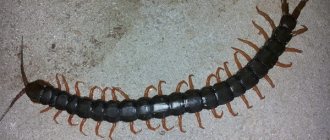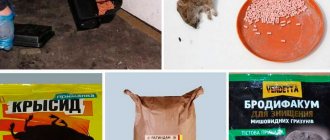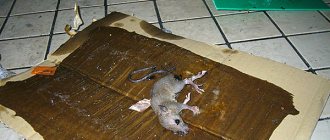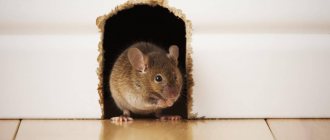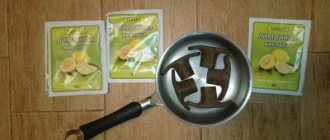Classification of poisons for rats and the principle of their action
Poisons can be used both indoors and outdoors. They are produced in the form of powder, granules, gel, grain, liquid, steam or gas, tablets, briquettes. Also, the poison can be with or without a smell, and have a different color. It must be remembered that rat poison can be dangerous not only for rodents, but also for humans.
Rats most often appear in sheds and other outbuildings
By composition
According to this criterion, poisons are divided into:
- inorganic. They contain metal compounds such as aluminum, lead and thallium salts. This makes them dangerous to humans and the environment, so they are almost never used. The exception is that rats have immunity to other poisons. Death of rodents occurs when large doses of the substance enter the body;
- organic. They do not require the use of large doses. They are safer when compared with inorganic poisons.
By method of penetration
Poisons for rats can enter the rodent’s body in different ways, so the following groups are distinguished:
- intestinal poisons, entering the pest’s body along with food, cause poisoning;
- contact ones penetrate the rat upon contact with them. They can cause burns or closure of the airways;
- fumigants poison the air. The poison enters the body by inhaling vapors or gases. Fumigants are presented in solid (paradichlorobenzene), liquid (dichloroethane), and gaseous (sulfur dioxide) form.
The poison can enter the rat’s body through the stomach, respiratory system or skin
By validity period
Not all poisons immediately poison a rat, so they are divided into:
- immediate acute action. The poison, entering the stomach, almost immediately causes the death of the rodent;
- long-term and periodic action. The speed of action depends on the amount of the substance in the body; it usually takes 1–2 weeks. These drugs include anticoagulants - substances that thin the blood and prevent the formation of blood clots. This means that the rodent will die from internal bleeding. Such poisons contain mummifying substances that prevent the body from rotting, but dry it out.
The poison must be selected for the rodent and the type of area
Anticoagulants of different generations
Anticoagulants are classified into a separate group. They are divided into drugs:
- the first generation is less effective because they are not immediately absorbed and require large doses. These drugs include: “Warfarin” (“Zookoumarin”);
- "Difenacin" ("Ratindan");
- "Trifenacin" ("Geltsin");
- "Chlorfasinon" (briquettes from rats "Ratidion-HF");
- "Kumatetralil" (Rakumin powder).
- "Flocumafen" ("Goliath");
Anticoagulants provoke internal bleeding, which is why the rat dies
Ratobor
Ready-made grain poison for mice with a mummifying effect. Produced in Russia. The active ingredient is brodifacoum. The drug is recognized as one of the most effective in its category. It is poured onto a substrate in places where rodents live or frequently move. After eating the poison, the pest dies within 4-7 days. The carcass does not decompose, does not emit an unpleasant odor, and is mummified. The average cost of the drug is from 20 rubles for 1 sachet (100 g.)
The benefits of mouse repellent include:
- affordable price;
- efficiency;
- economical consumption - 200 g container. enough to treat an area of 20–30 square meters;
- is minimally pulled around the area;
- easy to use.
The mouse repellent in the house is safe for people and animals. The poison contains a bitter additive, which reduces the risk of ingestion of the drug by pets.
Alexei
Using this bait I got rid of rodents in my dacha. The mice spoiled the harvest, ran on the tables, and ate the food. I was looking for a safe option, since children often visit the dacha. Of course, the results from it are not instant, but they are really effective. There is no foreign smell or prints on surfaces. Rodent carcasses do not smell later and do not decompose, which is a huge advantage. And, of course, the price is pleasing. It is more than accessible to everyone.
Popular rat control products
You can purchase poison at any specialized store. When choosing, you should be guided not only by price, but also by other characteristics.
"Ratsid"
This is a highly toxic product (it is not fatal to humans, but precautions must still be taken). The lethal dose for a rodent is 20–25 mg. After eating food with “Rat”, the rodent dies from suffocation within 12–72 hours. If the poison does not work, the rat will develop immunity. "Krysid" can be used in different ways:
- spray into holes;
- mix with bait (it should be placed 3-4 days after feeding with non-poisoned food);
- pour into water.
"Krysid" is toxic to rats and can also cause poisoning in pets
"Ratox" and "Commando"
They are made on the basis of zinc oxide. Such means are much more dangerous than “Ratsid”. When zinc phosphide enters the digestive system, it begins to react with hydrochloric acid, releasing highly toxic hydrogen phosphide, which kills the rodent.
Ratox cannot be used in residential areas
These products have a specific odor and can react even with air, so their use in residential areas is strictly prohibited.
Commando poison easily reacts with air
Reasons for appearance
Remedies against rats
Rats belong to the order of warm-blooded rodents that prefer to live with people. It has been scientifically proven that pets are carriers of diseases such as plague, typhus, and salmonellosis. Contamination occurs in different ways and the most likely is contamination of food through feces. Rodents actively damage property and their sharp teeth can easily cope with concrete, brick, and materials such as wood, plastic, chipboard do not pose any obstacles to gnawing.
The appearance of rats in your home is not only unpleasant, but also brings danger and additional financial costs. Animals may not drink water or eat for a long time, jump quite high, swim well and are susceptible to any odors. Background radiation also does not affect them in any way. Rodents show aggression and can attack people, and if they are hungry, they are even less afraid of humans.
If rats are actively breeding, then this circumstance is due to inappropriate hygiene conditions.
List of reasons for the appearance of rodents:
- Presence of garbage dumps and dumps in the yards. Leftover food, paper and cardboard, etc. can be eaten.
- Garbage in apartments and the appearance of unpleasant odors.
Rats easily chew through concrete and it is easy for them to get into apartments through ventilation shafts.
Prohibited poisons for rats
In addition to arsenic and strychnine, other dangerous poisons are known. These include products based on:
- thallium salts. This is “Celiopaste”, which is no longer for sale. Thallium sulfate is prohibited in some states;
- yellow phosphorus. Toxic agent that causes severe burns. Rodents die after eating the bait once. But the drugs are so dangerous that they are banned in all countries of the world;
- lead Their main disadvantage is that they are easily recognizable by rats, although they are effective.
When fighting rats, you should not use highly toxic poisons that can harm the environment and pets.
Mousetraps
Rats are rarely baited in a mousetrap. Animals smell human hands and do not approach the device. But mice easily fall into a trap.
There are several types of devices:
- Classic. It was invented in 1884 and is still popular today. As soon as the animal reaches for food, the steel shutter slams shut and kills the animal.
- Sticky. The rodent sticks to the surface where it applies rat and mouse glue and cannot get out. This device is considered one of the most cruel methods of fighting mice.
- With infrared sensor. Model made in UK. An animal, running through a mousetrap tunnel, crosses infrared rays. The trap slams shut and fills with water and carbon dioxide.
On a note!
Animal rights activists are against this means of fighting mice in the house. The devices do not always kill the animal instantly and cause it suffering.
Rules for preparing poison with your own hands
Folk remedies for rats are significantly inferior to industrial ones, so they are often used as additional ones. There are several ways to prepare poison at home:
- gypsum in milk. You need to mix them so that the consistency remains liquid. In the rat's intestines, the gypsum thickens and interferes with natural nutritional processes, which is why the rodent dies. You need to be prepared for the fact that animals are able to recognize this threat, so the remedy may be ineffective;
- quicklime with sugar. In the rat's stomach, the lime heats up and corrodes its walls. The method is not the most effective, but accessible. There is no confirmation of information about the effectiveness of this method, but minimal harm will definitely be caused to rats;
- cork shavings. It can be mixed with any porridge or animal food. May cause gastric obstruction;
- crushed glass. It needs to be added to the bait, preferably liquid. Glass will cause severe harm to the digestive and circulatory systems;
- chilibukha tincture. It is added to liquid bait. The tincture is poisonous due to the strychnine content, but rodents easily detect this remedy due to its strong odor, similar to garlic.
You can add rat poison to water or milk.
Mechanical traps
These products are simple, cheap, effective, but very troublesome to work with and do not provide such massive destruction of rats as poisons can boast.
The most primitive and simple trap kills one rat and after that requires recharging - until the dead rodent is pulled out of it, it will not kill a new one. As a result, it is extremely difficult for them to catch a hundred or a thousand rats, which means that this is a remedy for a small room, including at home, including in a country house, in a basement, or in a barn.
The advantage of such traps is the controllability of their work. It is quite obvious from the trap whether it worked or not, whether it killed the rat. Moreover, if a rat lives alone in a certain room, a trap is enough to solve the problem with one trigger.
There are trap options designed to catch and kill several rats in a row. Such structures include homemade traps - buckets and boxes with tilting bridges, into which many rats can fall without reloading. But they have no talk about scale: at best, such a trap can catch several dozen rodents. Hundreds and thousands of pests will not be caught in it in a short time.
In addition, the traps are quite safe. Even spring squeezers can be made harmless by simply placing them in a cardboard box with a hole that a cat cannot fit through. In modern containers with such crushers, the trap itself is even fenced off with a partition, into which a particularly curious cat cannot even put its paw. And the rat will climb in without any problems.
These same traps are inexpensive. The simplest rat traps cost 100-150 rubles, more technically advanced ones cost up to 500, which is still quite acceptable.
One such trap can serve faithfully for years, killing hundreds of rats during this time.
And one more non-obvious advantage of such devices: a rat killed in a trap will not run away, die or stink somewhere behind the drywall, or in a ventilation duct, from where its mercilessly stinking corpse cannot be pulled out without the need for repairs.
We use such traps in private homes, in the basements of apartment buildings, in offices, and administrative buildings of enterprises. For home use, this is perhaps the best option.
Effective rat repellents that work in small areas
In small areas, for example, in a chicken coop, barn, car, it is better to use low-toxic products. It is recommended to choose odorless, unsightly substances, especially if this is a residential area, or to call professional deratizers (deratization is the process of eliminating rats and mice). One of the best remedies for small areas can be safely called “Nutcracker”. It has low toxicity for people and does not smell. The product causes 100% death of rats and mice within 4–8 days.
Nutcracker poison is low toxic to humans
The Nutcracker is also available in the form of a dough-like substance similar to plasticine.
Features of the house mouse
General description:
- The size of the mouse does not exceed 7-9 cm, the tail is the same length.
- The dorsal color is gray or slightly yellowish, the belly is slightly lighter gray.
- Weight 19 grams.
- They are mammals.
They reproduce in a residential building year-round, in outdoor conditions in the summer, during the warm season. The ability to reproduce appears at one and a half to two months of life. The gestation period lasts up to 28 days. The female arranges her nest, placing pieces of newspapers and wool there. Due to the frequent birth of mice, the population is rapidly increasing.
Before the cubs appear, the mouse becomes aggressive and can attack a person, bite or scratch. If this happens and the mouse scratches you, go to the hospital immediately for medical attention.
Mice eat food of plant and animal origin. They are most active at night or during twilight hours. They make warm nests for their little mice, and they always have food supplies in their holes.
Rodents easily adapt to any conditions. If there is no food in one human dwelling, they quickly leave and emigrate to another dwelling.
An effective means of baiting rats over a large area
The main means of fighting over large areas are:
- bait houses. Food containing poison is placed in them. They place houses in places where there are large concentrations of rodents. When a rodent comes inside, the house closes;
- treatment of burrows with rodenticides (poisons in powder form). Particles of the product fall on the fur, and then when licked inside the animal;
- filling holes Rats can chew through most materials, even concrete. Therefore, it is better to cover the holes with metal sheets or a wall made of cement, shells and crushed glass;
- traps and traps. Most often they have a wooden base. It is difficult to catch a rodent with such devices; they can only be used in secluded places once, since rats leave their odors, warning their relatives of danger;
- carbonation. A poisonous gas based on hydrogen phosphide or carbon monoxide is sprayed into a closed room. This mixture does not harm food products and disappears quickly, leaving no odor.
Small size is deceptive as the rat can be fast and agile
Electrical traps
One of the most modern, very effective and very expensive means. For them, everything is relevant as for mechanical traps, and their only important advantage is the ability to “store” the corpses of killed rats in a special chamber, due to which such a trap can kill several individuals without checking.
Other small advantages of electric traps are their ease of installation (there is no need to charge the spring mechanism, which, when charged in this way, can “cut” your fingers) and the absence of misfires - if a rat touches the hook with its teeth on which the bait hangs, it will be killed. Moreover, the death of the rodent will come quickly and it will not suffer.
In our opinion, these advantages are not worth the price difference between an electric trap for 1500 rubles and a die for 120 rubles. Moreover, traps that “load” rats into the compartment cost even more - up to 3000-4000 rubles, and most of them need to be plugged into an outlet, which greatly limits their scope of application. That’s why we literally have several of these traps, and we rarely use them.
Case from practice
A clear example of a case where an electric trap was needed is an elite dovecote in the Krasnogorsk region, in which it was necessary to kill a rat, or several rats. Pigeons were worth their weight in gold, they were regularly transported hundreds of kilometers to release and weed out those that did not return home, and rats killed several chicks in their nests every day and even attacked adult birds, chewing off their toes. Here, in the dovecote itself, it was possible to install only mechanical traps in containers and electric traps. In the utility rooms, the disinfector installed glue traps and laid out granules with poison. However, two rats were caught in an electric trap (apparently, they rarely climbed into the back room, and they already knew the mechanical trap and avoided it).
Rules for treating premises from rats
Rats are smart and organized animals, and they may not react to bait and traps that are simply scattered around. These rodents live in groups. They send the weakest rat on reconnaissance. She checks baits, inspects the suitability of new territories, etc. Therefore, slow-acting poisons are the most effective. After 5–7 days, the rodents die without having time to “inform” their relatives about the danger.
It is necessary to decide which area is inhabited by rats and what they eat. When preparing poison, their diet must be taken into account.
First, you need to feed the rats regular food, and then gradually add poison. You need to be very careful if there are small children or pets in the room, as they may accidentally become poisoned. Place the poison in areas where rodents are active. You can find out about these places as follows. Sprinkle a little flour where they are likely to appear, and check the next morning to see if marks have been left. After this, you can already think through the tactics of placing the poison. For greater effectiveness, combine industrial remedies with folk ones. If poisonous baits remain untouched for several days, then the rats have sensed danger and will not consume your poison.
It is necessary to regularly treat the room from bacteria and traces of rodent activity, since they are carriers of diseases. Basic methods of disinfection:
- surface treatment with antimicrobial agents;
- removal of garbage and food products with which rodents have been in contact;
- heat treatment of textiles;
- use of antiseptics;
- maintaining personal hygiene.
It is also necessary to get rid of the dead rats. Do not touch them with your hands under any circumstances.
Video: how to properly treat rats
Using ultrasonic repellers
Ultrasonic repeller is a modern product whose action is based on the influence of ultrasound. High-frequency wave oscillations affect the nervous system of rodents, causing a feeling of danger, fear and panic, as a result of which they rush to leave the room.
Human hearing does not pick up these vibrations, and the device has no effect on people. Acoustic emissions are considered safe for cats and dogs.
The repeller operates using electricity by connecting to the mains via an outlet or using batteries.
When using the device, it is important to consider the following features of its operation:
- The coverage area is determined by the wavelength, the parameters depend on the power of the device,
- signals do not pass through solid, smooth obstacles, but are reflected from them, increasing their impact in a confined space,
- Absorbers of acoustic vibrations are soft surfaces - furniture, carpets.
Manufacturers of the devices claim that after 15 days (maximum a month) there will not be a single rodent left in the house or apartment.
To increase the efficiency of repellers, it is recommended to use a separate unit for each room with a power sufficient for the given room, as well as remove carpets and take out upholstered furniture.
Attention! There are no exact data on the effect of repellent systems, so it is recommended to use additional methods in parallel. If the house contains hamsters, guinea pigs or other rodents, it is better to remove the animals while the repeller is operating.
Physical methods
The method has been used for a long time and is available for any budget. Thanks to their positive qualities, they gained fame and popularity.
Mousetraps
This design was also used by our great-grandfathers. There are two types of traps: open and closed. To make a potential victim want to visit one of them, it is recommended to place bait in the mousetrap. This could be a piece of cheese, sausage or any other product with a strong smell. The aroma will attract the animal; when you touch the mechanism, the spring will work and the mouse will be caught.
Trap Disadvantages: A mouse trap alone will not be enough to permanently eliminate rodents. You'll have to buy several traps.
In case of a false triggering of the mechanism, the trap must be reloaded. A mousetrap doesn't always kill. Rodents can get into it with their tails or limbs.
There will be no such troubles with a crocodile mousetrap. It only works when the mouse or rat is already inside. Careless operation of the structure may result in injury. Therefore, you need to be more careful.
Important! Children should not be allowed to play with such items. Do not leave mousetraps where they could harm your pets.
Electrical traps
This is a new development and it is only gaining popularity among users. The method belongs to the category of humane. Once inside, the rodent is shocked and dies instantly. The structure emits light signals. They help determine whether someone is in the mousetrap or not.
The advantage of the trap is that it can be used repeatedly. The disadvantages are that the mousetrap depends on mains power. Those owners who keep pets need to be especially careful with it.
Attention! The possibility of small animals falling into the trap together with rodents or instead of them cannot be ruled out.
We offer a list of the most famous devices:
- RatZapper.
- Victor Electronic Rat Trap.
- Multi Kill system.
- RAT Trap Victor.
- Rat Killer Yutec.
It is advisable to place the device where pests are most often found, for example, next to walls. You can stop setting mousetraps when there is no droppings or fur of small pests in the room. This means you managed to remove the mice, and you can celebrate your victory.
Glue traps
The adhesive strips work like mousetraps. Such paths are impregnated with a special aroma that attracts rodents. It could be the smell of seeds, bacon, peanuts. Having stepped on such a surface with its paws, the animal cannot leave it without outside help. Making efforts to break free, he only loses strength and becomes even more stuck.
Important! The disadvantages of this type of trap are that they are cruel to rodents. The mice become exhausted and die painfully from dehydration and hunger.
In addition, it is unpleasant to remove half-dead pests from the sticky tape. The advantage of Velcro is that they can be placed anywhere. Together with mice, it is possible to catch cockroaches, snakes and other creatures that you do not want in your home. Device rating:
- Rat & Mouse.
- "Rodentoff".
- "Kotofey"
- Expert Catch.
- "Force site".
"Live traps"
Despite the creepy name, this type of trap is the most humane, since the animal remains alive. The structure is designed in such a way that once a rodent gets into it, it cannot get out on its own. If your plans do not include killing the pest, then this option is for you. The animal will not enter the cage voluntarily, so it needs to be lured with something tasty. Considering that mice and rats are wary of new things, a clever approach with food bait will lull their vigilance.
Attention! To free the trap from a pest, you first need to place it in a bag, then open the door, and when the animal jumps out, you can safely take it out and release it.
The only downside is that mice can come back. You will have to check the device quite often so that the animal inside does not die.
